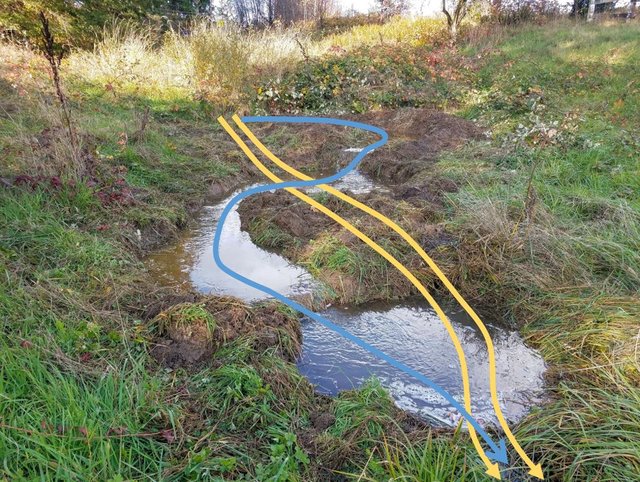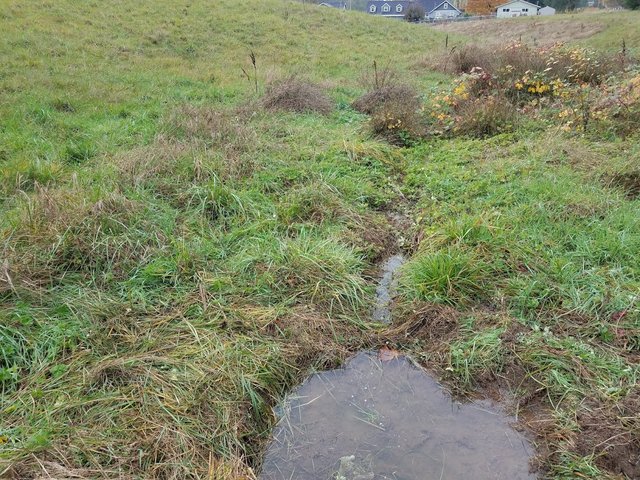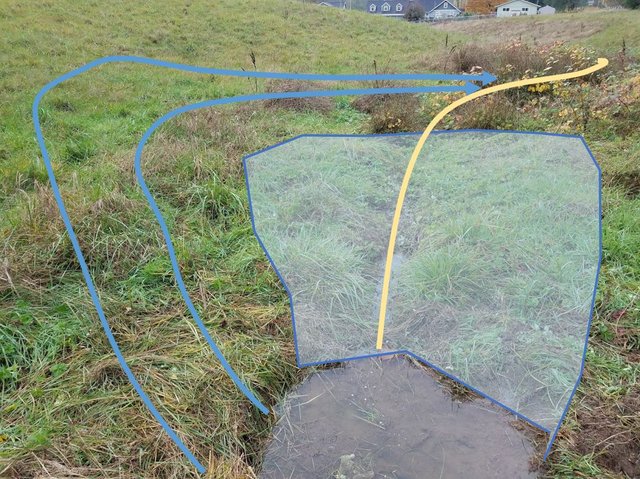A Closer Look at Improving a Stream
What does it look like to improve a stream? Why would you do this? Let's take a closer look! This weekend I shared a video showing some work I had done on a seasonal stream on my wild homestead. I thought it would be helpful to show a bit more of the work I did and my future plans for the stream.
In the top picture you can see a blue line marking the new channel through the pools. The yellow lines mark the old stream channel that the stream was flowing through before I did this work.
While the pools and the waterfalls are the obvious changes to the stream--they bring beauty to the system and the pools greatly increase the amount of water held in this section of the stream--the stream also gained a significant amount of "edge".
This edge is the shoreline of the stream--where it connects with the land around it. This edge is vital habitat and also is a place where the stream interacts with the land.
The stream also gained a significant amount of edge as streambed--this is the area at the bottom of the stream.
All of this increase in edge results in better habitat and more opportunities for the water to soak into the soil and hydrate the land.
I plan to dig the pools out more in the summer when the stream goes dry to further increase the amount of streambed and increase how much water the system can hold.
If you're wondering what the stream used to look like the above picture was taken looking downstream from the last of the new pools I made. You can see how the stream basically disappears into the grass--that is what the whole stream used to look like in the area I modified.
Very little edge, the water just flows through, and very little of it soaks into the land. There is also very little habitat for wildlife and the land is drained not hydrated.
But there is more work to do--here is a sneak peak at the next steps for my work to hold more water on my wild homestead.
This picture is showing the same area as the last picture but with some quick sketches showing my current thoughts. Though things always change as I start to dig!
The basic idea is that the existing stream channel will be widened significantly and a dam will be created at the end of it to create a large pool that will connect with the existing pool that I built over the weekend.
This way the water will still reach this area and support the existing rushes growing just downstream of where I want to put the dam.
But I will also dig a brand new channel coming off the upstream side of this large pool that will take the water far out from where it currently flows. At the furthest point out from the existing channel I will dig a large pool--the largest yet of this new water system.
The new channel will then flow out of this new pool and down into the area of rushes just downstream of the new dam. This will hold substantially more water and bring water to a much larger area than it currently reaches.
All together this work combined with the previous pools (once dugout) could hold 5,000 or more gallons of water as surface water plus much more groundwater.
This improved stream only represents a small part of my plans for a new water system. I hope to reach 100,000 gallons of water stored on my land as surface water at full capacity in the future. But that is still a ways off.
A final note is that all the excavated soil from this work is being used to create little berms and mounds along the stream. These areas are a bit drier but still let plants get their roots down into the water if they want. Some plants don't like to be saturated so this further increases the diversity of plants I can grow.
I hope you all have found this dive into my stream improvement work to be interesting--working with water is by far my favorite part of being a wild homesteader. I have been called a water dog for good reasons!
What are your thoughts? Are you storing water on your wild homestead? Please leave a comment sharing your thoughts and make sure to watch for my new blog post coming out tomorrow all about how to store water on your wild homestead!
Thank you!



Thanks for sharing:)
Thank you!
To listen to the audio version of this article click on the play image.

Brought to you by @tts. If you find it useful please consider upvoting this reply.